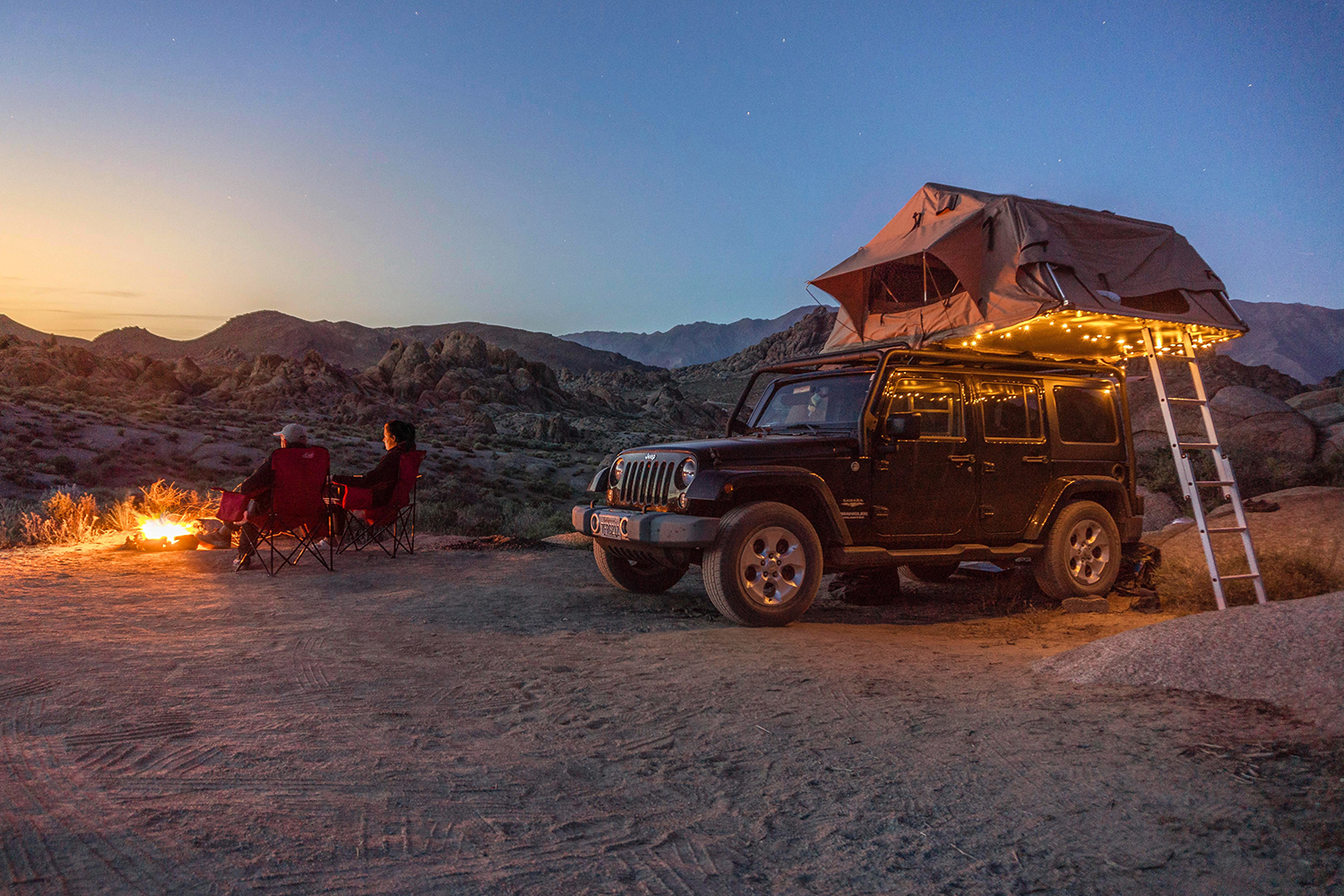Long before social distancing was a requirement, many of us routinely sought escape from civilization. Two ways to achieve this, overlanding and off-grid camping, have exploded in popularity over the last decade. While it’s nice to get away from your home, going off-grid doesn’t have to mean removing all its comforts. With a proper rooftop tent, you can have access to a relaxing, go-anywhere sleep space that’s nearly as comfortable as your bedroom back home. Here’s what you need to know before committing to a rooftop tent.
Related Reading
Pros and Cons of Rooftop Tents
Spend any time on YouTube, and all the most drool-worthy overlanding rigs seem to boast pricey rooftop tents. Their ubiquity makes them seem like a requirement for anyone serious about overlanding. If you’re looking for one, it’s important to understand their pros and cons to determine if they’re right for you.

The two best reasons most car campers opt for a rooftop tent are convenience and comfort. The best models are designed to pitch in a couple of minutes. In most cases, all that’s required is finding a relatively level parking spot, undoing a few straps or latches, and raising the roof (literally). Even mid-range models boast hydraulic struts to assist with the latter, so it requires near-zero effort. Most models are durable and robust enough to survive even the strongest storms, making them far more weather-resistant than traditional tents. What’s more, a growing number of rooftop tents also feature a built-in foam mattress that can stay inside the tent, whether it’s open or closed.
There are two drawbacks to rooftop tents, however. The first and most significant is price. Even an entry-level model will set you back around a thousand dollars. Realistically, most folks will want to spend the extra money on a mid-range model, which can easily run $2,000 tp $3,000 or more. Still, even taking into account the truck or SUV you’re attaching the tent to, the grand total is likely to run less than an RV. The other consideration when buying a rooftop tent is the additional drag it will place on your vehicle. There isn’t really a way around this problem. It is what it is, so to speak. Just know that the additional weight is going to cut into your fuel economy.
Pros:
- Convenient
- Comfortable
Cons:
- Price
- Drag and weight
Fitting a Rooftop Tent to Your Car
If you’ve decided a rooftop tent is right for you, the next consideration is finding the right model for your vehicle. The first step is to check the owner’s manual of your vehicle (if it included a factory-installed roof rack) or aftermarket roof rack. Most will explicitly say whether they are compatible with a rooftop tent.
Each roof rack is capable of carrying a maximum static and a maximum dynamic load. Static weight refers to the weight the rack can hold when the vehicle is stationary. This is rarely an issue as most car roofs are designed to survive a rollover accident. Still, take a minute to calculate the weight of your tent, along with that of the occupants and their gear to ensure your roof rack is sturdy enough to support everything.

Dynamic weight denotes the weight the rack can support while the vehicle is in motion. The heaviest rooftop tents can weigh several hundred pounds, so it’s critical to know whether your car’s rack can support all that weight. Finding out that it can’t is not a welcome surprise if the tent becomes a lethal projectile while on the highway. Aftermarket roof racks tend to be stronger than factory alternatives. If you find that you need something more robust, there are plenty of options from Thule and Yakima.
Installing a Rooftop Tent
Installation of a rooftop tent is typically straightforward. Due to their sheer weight, having a strong partner to help with the install is essential. Assuming you’ve double-checked the compatibility of your new tent with your existing roof rack setup, it should be a matter of securing a few bolts, clips, latches, and the like. From unboxing to completing the installation shouldn’t take longer than 20 to 30 minutes. Plus, once it’s on, you needn’t worry about it for the foreseeable future.
Other Things to Consider
It seems obvious, but be sure to confirm any shipping costs when shopping for a new rooftop tent. Some high-end manufacturers include “free” shipping because customers are already paying a premium for their products. In many cases, however, because most tents average between 100 and 200 pounds, the shipping costs can be substantial. It could be worthwhile to buy your tent in-store.
Another point to consider is whether you want a hardtop or soft-top tent. Hardtop models are typically heavier and more expensive, but they’re also more durable and easier to pitch. Fabric models require more maintenance and care to ensure they dry out properly. But, they’re also lighter and more affordable.
Some high-end models include nice-to-have accessories like built-in awnings or separate covered living spaces. Modular units are also available that allow buyers to expand their tent setup in the future.



